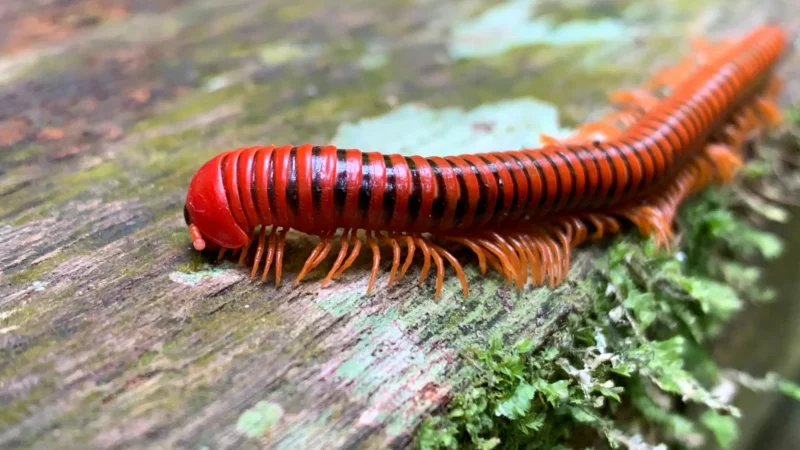Fast Facts
-
Millipede Secretions as Drug Sources: New alkaloid compounds discovered in millipede secretions could lead to treatments for neurological diseases and pain by modulating neuroreceptors.
-
Research Breakthrough: Chemist Emily Mevers and her team identified complex structures named andrognathanols and andrognathines from the millipede Andrognathus corticarius, published in the Journal of the American Chemical Society.
-
Ecological Significance: The study highlights millipedes’ chemical defenses and social behaviors while addressing gaps in knowledge about their ecology and potential medical applications.
- Future Steps: Plans to synthesize these compounds in larger quantities for further biomedical evaluation, focusing on their interactions with neuroreceptors linked to pain management.
A New Compound Discovery
Millipedes often face a bad reputation. Their many legs can trigger fear, labeling them as “creepy crawly.” However, recent research uncovers their potential in medicine. Chemist Emily Mevers and her team identified unique structures in millipede secretions that may aid in drug development. These newly discovered compounds, named andrognathanols and andrognathines, belong to a class called alkaloids. They can modulate specific neuroreceptors in ant brains. This interaction indicates a promising avenue for treating neurological diseases. By studying these complex compounds, researchers hope to unlock new treatments for human pain.
The process behind this discovery is intriguing. Mevers and her team gathered millipedes from leaf litter and branches in a local forest. They used various analytical methods to explore the compounds in the millipedes’ defensive glands. Interestingly, these secretions serve dual purposes: deterring predators and signaling their kin. This multifaceted role showcases the ecological significance of millipedes and their secretions. The findings highlight the untapped potential within these small creatures.
Broader Implications
Despite their abundance, millipedes remain shrouded in mystery. Their habitats, numbers, and behaviors are still largely unknown. This gap in knowledge hinders our understanding of their full potential. Yet, the excitement surrounding these compounds opens doors for future research. Mevers, along with millipede expert Paul Marek, plans to investigate further. Their collaboration emphasizes the importance of interdisciplinary approaches in science.
The focus now shifts to drug development. Mevers acknowledges the complexity of synthesizing these compounds in larger quantities. This step is crucial for studying their biomedical applications effectively. Once researchers fully understand these compounds, they may pave the way for innovative pain treatments. Thus, millipedes, often dismissed, might soon contribute significantly to medical science. The journey from “creepy crawly” to medicinal marvel illustrates the broader narrative of how nature holds keys to human well-being.
Stay Ahead with the Latest Tech Trends
Dive deeper into the world of Cryptocurrency and its impact on global finance.
Stay inspired by the vast knowledge available on Wikipedia.
TechV1

